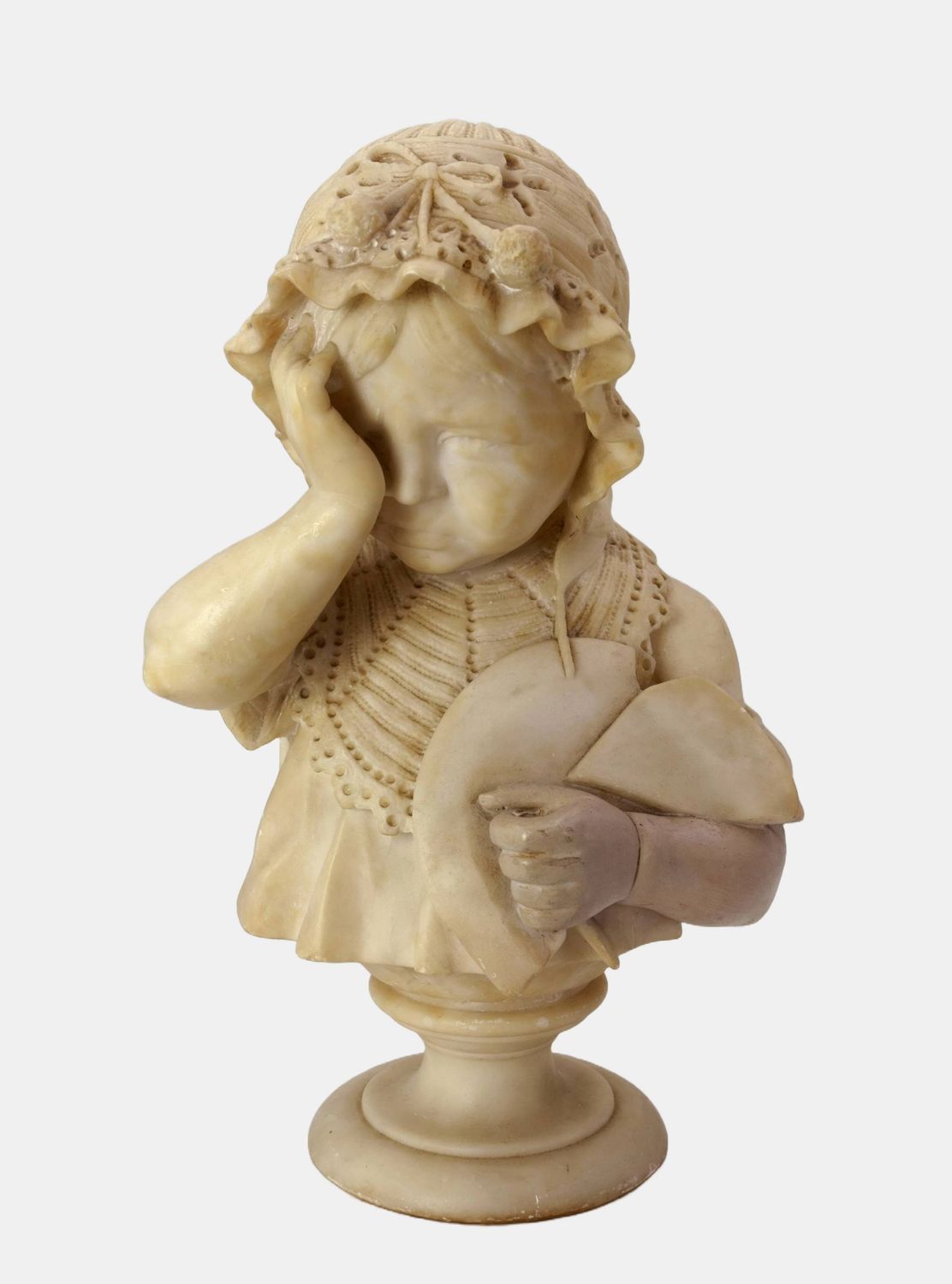Anonymous, Weeping girl with broken plate, c. 1890
Anonymous, Weeping girl with broken plate , around 1890. Artificial marble on removable turned base with metal spike (8 cm high), total height 40 cm, width 22 cm, depth 20 cm. Weight 10.1 kg.
- Left arm replaced, very scattered chips, base with flaking.
- Emotions of innocence -
The motif of the broken plate can be traced back to Jean-Baptiste Greuze's painting "The Broken Jug" (1771), to which Heinrich von Kleist wrote his famous drama of the same name. The painting became a powerful icon of the Age of Sensibility, which was repeatedly recreated and reinterpreted until the end of the 19th century.
In Greuze's work, the broken jug has a metaphorical dimension; it represents lost virginity, along with the innocence of childhood. However, the girl of the sculpture is a child, so the depiction focuses entirely on the childish drama of having broken a plate. She holds the broken pieces together with one arm while hiding her face with the other in grief and shame.
The grief is caused less by fear of punishment than by the experience of breaking things that have become dear. The girl embraces the broken pieces. This grief also has a metaphorical dimension; it is the grief for the irreplaceable loss that remains even in adulthood, but expressed here with childlike openness. The grief is mixed with the shame of having caused the irreparable loss, which also pervades the lives of adults and also comes to light here directly.
Since the Enlightenment, the child is no longer seen as a young adult, but as a childlike being. As a result, the child is now able to become a mirror for adults, so that they can recognize themselves through the child. This means that this sculpture is not 'just' a depiction of a child who has broken a plate, but - like Greuze's painting - also has a higher meaning.
As in Greuze's painting, the little girl is elegantly dressed. She wears a finely pleated lace cap and a similar neckerchief, while her dress, as in Greuze's work, has slipped down one side of her shoulders to express her inner turmoil through her clothing. The unknown sculptor has masterfully formed not only the clothing, but above all the physiognomy of childlike emotionality.

